Best smartwatches of 2015: the top ten on sale now
Apple Watch has breathed new life into the market. Here are the best smartwatch rivals it's taking on
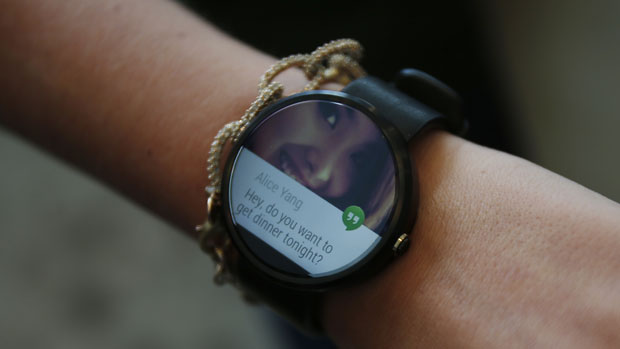
Smart, internet-connected watches are the present and future of wearable devices, offering to help with everything from sending quick emails and tweets to monitoring your health. Here are the best smartwatches available to buy right now.
Apple Watch
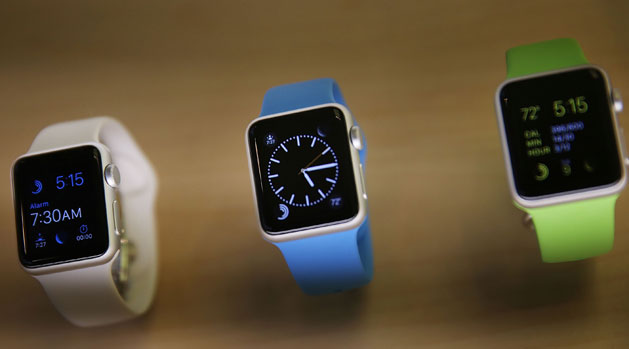
The most high-profile of the early smartwatches is undoubtedly the one built by Apple. Critical reaction has not been universally positive, but the Apple Watch does have its fans. "It's the first [smartwatch I've tried] where I've consciously really wanted to make sure I'm always wearing it and that the battery doesn't run out," says the Daily Telegraph's head of technology, Matt Warman.
The Week
Escape your echo chamber. Get the facts behind the news, plus analysis from multiple perspectives.

Sign up for The Week's Free Newsletters
From our morning news briefing to a weekly Good News Newsletter, get the best of The Week delivered directly to your inbox.
From our morning news briefing to a weekly Good News Newsletter, get the best of The Week delivered directly to your inbox.
In the Wall Street Journal, personal tech columnist Geoffrey A Fowler agrees. "With the Apple Watch, smartwatches finally make sense," he writes. "The measure of their success shouldn't be how well they suck you in, but how efficiently they help you get things done. Living on your arm is part of that efficiency – as a convenient display, but also a way to measure your heart rate or pay at a cash register. This is a big idea about how we use technology, the kind of idea we expect from Apple."
The Apple Watch may not be perfect, says Joshua Topolsky, editor of Bloomberg Digital, but it is the best option available for anyone who is already convinced they need to have a smartwatch.
"The watch is not life-changing," he says. "It is, however, excellent. Apple will sell millions of these devices, and many people will love and obsess over them. It is a wonderful component of a big ecosystem that the company has carefully built over many years. It is more seamless and simple than any of its counterparts in the marketplace. It is, without question, the best smartwatch in the world."
Pebble Time
A free daily email with the biggest news stories of the day – and the best features from TheWeek.com
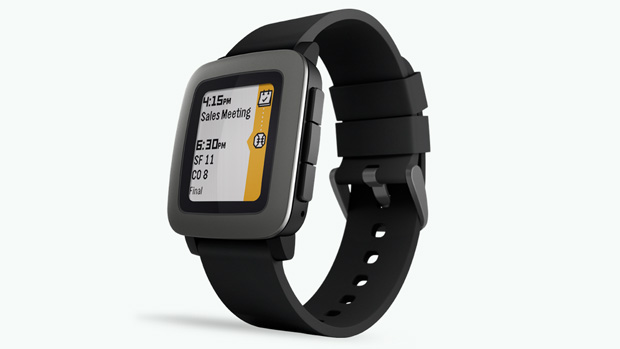
The Pebble Time received rave reviews from KickStarter backers who, as payback for their financial support, were sent an early version of the device prior to its full release. Independent reviewers were equally enthusiastic, praising the smartwatch for doing a few things well rather than many things badly – which is the problem with numerous other smartwatches. The Guardian's Samuel Gibbs praises the Pebble Time's long battery life, always-on screen, waterproof frame and "great music controls".
Unlike most of its competitors, the Pebble Time doesn't have a touchscreen, but instead has a four button control system. The button on the left acts as a back button, while the three on the right scroll up or down through menus and select. The phone also uses a colour e-paper display, rather than an OLED screen like on the Apple Watch. But the decision to use a simpler screen is linked to its long battery life, which can last for up to seven days rather than 24 hours or less.
"Sure, it doesn't offer the same degree of sophisticated style and high-end features as the competition," says Engadget's Nicole Lee, "but if you're tired of the hubbub over Android Wear and Apple Watch and want a decent alternative, then it could be well worth your time."
Asus ZenWatch
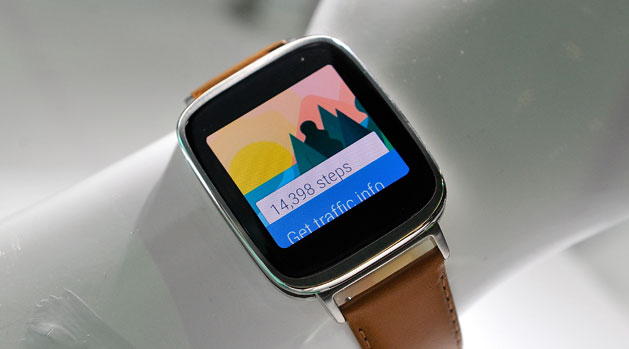
When it came out earlier this year, reviewers praised the ZenWatch for its styling as well as its bright display and respectable battery life. The device is "the most attractive square Android Wear watches on the market", The Guardian said, and a "solid contender for the … Apple Watch".
According to Engadget's Chris Velazco, "it's the first smartwatch I've worn that's ever attracted random compliments from passersby (in two countries, no less), not to mention the first one that didn't make me feel like a complete nerd while wearing it."
The watch has 14 custom faces, a built-in heart-rate sensor and a strong 1.63-inch Gorilla Glass 3-covered screen.
At £200, the ZenWatch is one of the more expensive Android Wear smartwatches on the market, but it is "comfortable, looks great and works well," the Guardian concludes.
There is an argument to be made that a round watch face provides "a more immersive touch experience" than a square one, says Android Central, but "if that's the biggest complaint we have about the ZenWatch — and it pretty much is — Asus has a clear winner on its hands."
Samsung Gear Live
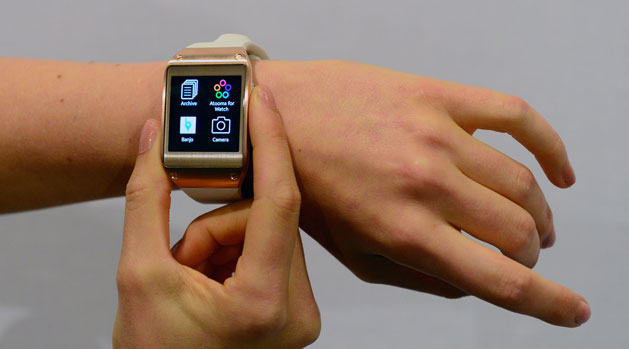
Samsung's Gear Live sports a conservative square face, a sharp and colourful 1.63-inch super AMOLED 320 x 320 resolution display as well as a heart-rate monitor.
Google Now, running on Android Wear operating system, neatly presents notifications, although reviewers do have concerns over its rather bland look and Samsung's history of instantly obsolete products (the firm has released five smartwatches in the last year).
"If you insist on being an early Android Wear adopter, the Samsung Gear Live is the one to go for right now, but only by a very small margin," says [8]Trusted Reviews. "The Gear Live and its Samsung Gear 2-inspired design means it's more elegant than the LG G Watch and has the more impressive screen. Elsewhere, specs are almost identical, with the unreliable heart-rate monitor the only other notable difference."
However, the tech site warns that Google Wear isn't without fault and that "battery life remains a big problem here and is enough of a reason to hold tight and wait for an Android Wear smartwatch that doesn't require charging up the same amount of time as your smartphone."
Motorola Moto 360
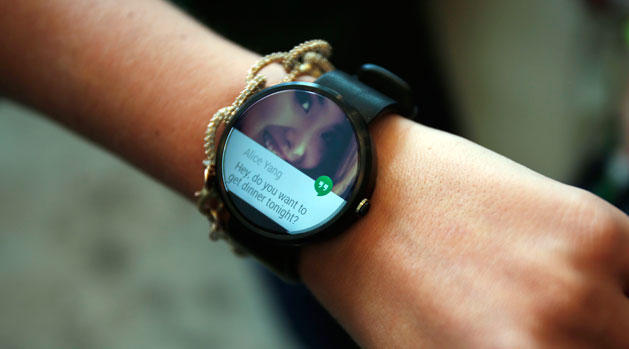
The Moto 360 is arguably the most stylish and refined smartwatch available today and represents a significant turnaround for languishing Motorola. The smartwatch has a striking yet traditional watch face, runs on the Google Android Wear operating system and features a 1.65-inch 320 x 290 resolution display, which – while not the sharpest – is toughened and water resistant.There are plenty of apps to choose from while you can use the embedded Google Now function to search, check emails, text, calls, tweets and weather – even using your own voice.The heart-rate monitor and pedometer are less well-received by researchers, and battery life is short, but otherwise the Moto 360 is described by many as the best smartwatch around."With its stylish good looks, comfortable feel and overall premium build, the Moto 360 is the Android Wear watch to beat," says Engadget. "When it comes to design, at least, it outclasses everything else on the market. Aside from aesthetics, the 360 offers many of the same features as its rivals, including a heart rate sensor and a pedometer, plus some other goodies like wireless charging and an ambient light sensor."
LG G Watch R
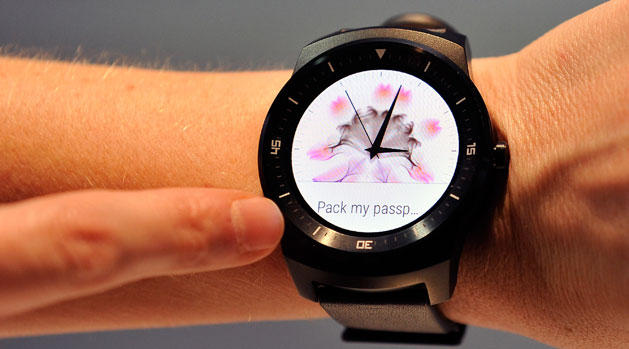
Following on from the often criticised G Watch, LG has seemingly come up trumps with the G Watch R, which offers an improved circular 1.3-inch OLED display and a more appealing design.
Reviewers praise the watch for its bright and crisp display, a reasonable performance from Android Wear and the styling, while the two-day battery life is a bonus.
The voice activation function "works pretty well", says Techradar, but "it's not perfect". On several occasions the G Watch R did not hear the words correctly, adding "considerable delay" to composing a message. "It also still feels rather odd talking to your wrist," says the site.
Wired notes that the price of the G Watch R has remained more or less the same as the original, which is "a good thing" considering the greatly improved styling and screen.
"But with similar processor and battery it offers no improvement in performance, and Android Wear still needs a bit of work. Still, if you must own an Android wearable, this is the one to have right now," it added.
Sony Smartwatch 3
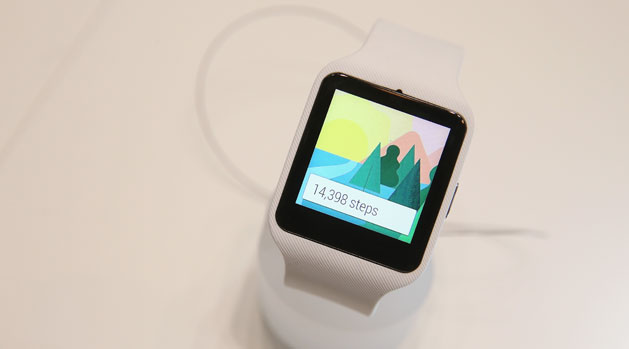
Sony's Smartwatch 3 goes against the grain of a circular design with a rectangular face, but its 1.2GHz quad-core processor and 512MB of RAM are powerful enough to get through tasks, while the built-in GPS enables it to be used adequately as a fitness accessory.
The 1.6-inch 320 x 320 transflective display is sharp and water protected, and arguably slightly better than Moto 360. The device runs on Android Wear, which uses Google Now for notifications, and can be used standalone from a connected smartphone. It can also be personalised with wide range of colourful straps."The Sony SmartWatch 3 is a powerful and well-equipped wearable with a good screen and reasonable battery life," says TechRadar. "If it could do all that while looking like an actual wristwatch it would be a real winner, but it's still impressive."
Pebble Steel
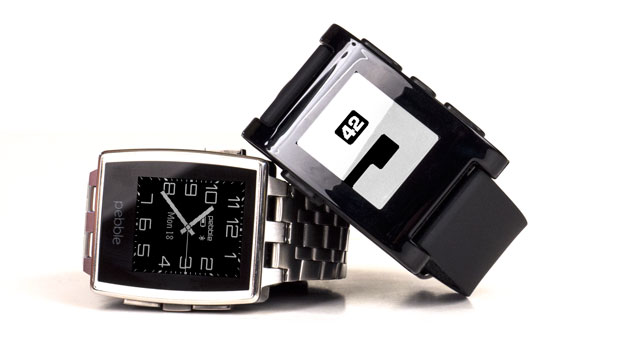
The Kickstarter-backed Pebble has kept it simple with the Pebble Steel, which adds a steel and leather design, a new operating system and more applications over previous Pebble designs.
The 1.26-inch ePaper LCD screen is readable and energy-efficient, but perhaps the best feature of the device is that it will connect with any Apple or Android machine via Bluetooth. The 'killer' seven-day battery life is the best on the market, while the new operating system neatly organises your schedule into Past, Present and Future views. In addition, Pebble Steel will let you control music on your phone,
"The Pebble Steel isn't just the best smartwatch ever, it's the blueprint for real world wearable tech beyond the gimmicks and glassholes we've seen so far," says Stuff magazine.
Sony SmartBand Talk SWR30
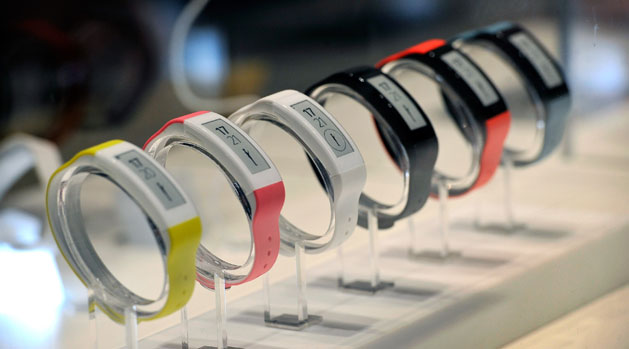
There's no shortage of wearable fitness aids on the market, promising ever more detailed levels of activity monitoring. However, the Sony SmartBand Talk SWR30 is one of the few models that seriously seeks to compete with standalone smartwatches, allowing the wearer to make and receive calls (although presumably not private ones), use voice control, and receive messages and notifications as well as track their fitness goals.
The SmartBand bridges the gap between fitness band and smartwatch, displaying notifications from your Android apps in real time, but unlike most smartwatches on the market, if you want to respond to them, you'll have to dig out your phone.
Designed to be worn all day, the SmartBand's slim, lightweight build, comfortable rubber wristband and e-ink display have won favourable comments in many reviews. "Put simply," says Pocket Lint's Britta O'Boyle, "it just works."
While the SmartBand is undoubtedly impressive as a fitness aid, its reduced functionality compared with a fully-fledged smartwatch raises questions about its ability to compete in the market. "An intriguing product" says TechRadar's Andrew Williams, but will anyone "actually want it?"
For Andrew Hoyle at CNet, however, the device is strong enough to stand alone – "a useful piece of tech to wear, even if you're not fussed about keeping track of your activity during the day."
Martian Notifier
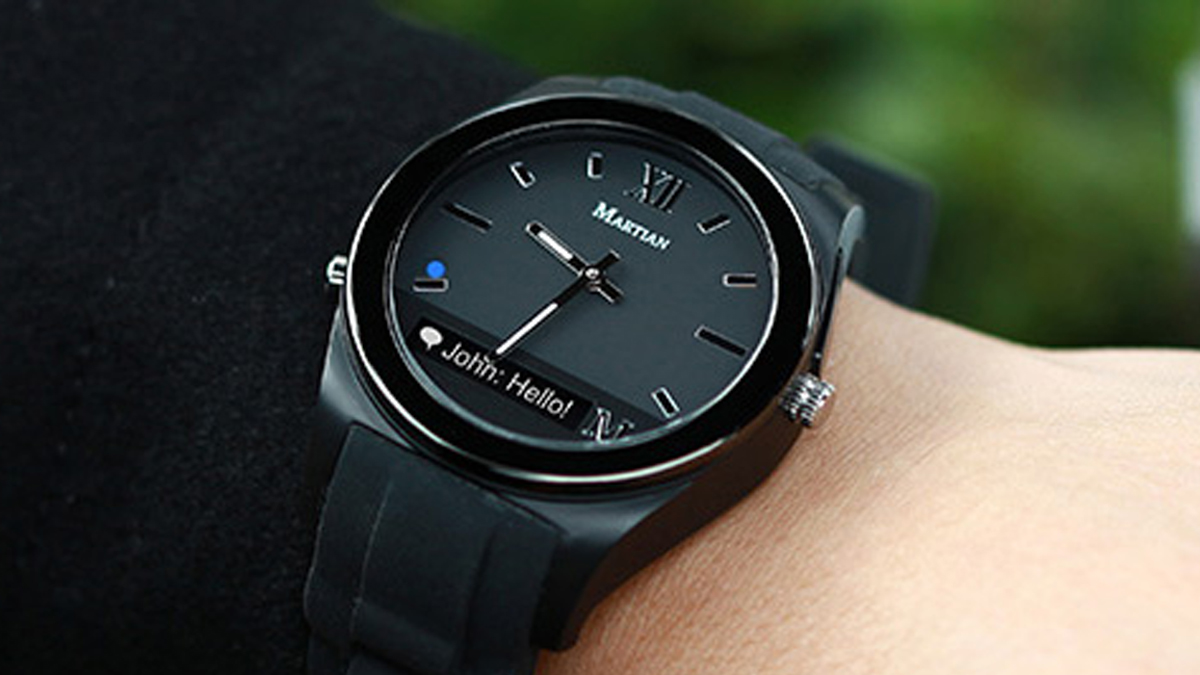
The Notifier, from American kick-starter firm Martian, offers an alternative for those who don't want the stereotypically large screen of a smartwatch on their wrist. It looks more like a regular watch, but allows users to see text messages, social media notifications and caller IDs via a small OLED screen at the bottom of the watch face. The smartwatch, which connects to both Android and iOS handsets, comes with different coloured silicone straps or a stainless steel band, and sells for around £69.95 on the high street. Other features include a button that activates voice control on your phone, and tools to find your phone if it goes missing. It can also act as a remote control for your smartphone's camera, making it easier to take selfies from afar.
The Notifier might be the "baby step" that is needed to get people into high-tech watches, as it doesn't do too much and is "positively understated", says Digital Trends. "Compared to the rest of the field, it's definitely more 'watch' and less 'smart'," adds the site, but CNet says that if you are looking for a way to get subtle phone alerts on your wrist without busting the budget "it's hard to top the Martian Notifier".
-
 Wave of cancellations prompt Kennedy Center turmoil
Wave of cancellations prompt Kennedy Center turmoilIN THE SPOTLIGHT Accusations and allegations fly as artists begin backing off their regularly scheduled appearances
-
 8 incredible destinations to visit in 2026
8 incredible destinations to visit in 2026The Week Recommends Now is the time to explore Botswana, Mongolia and Sardinia
-
 The dark side of how kids are using AI
The dark side of how kids are using AIUnder the Radar Chatbots have become places where children ‘talk about violence, explore romantic or sexual roleplay, and seek advice when no adult is watching’
-
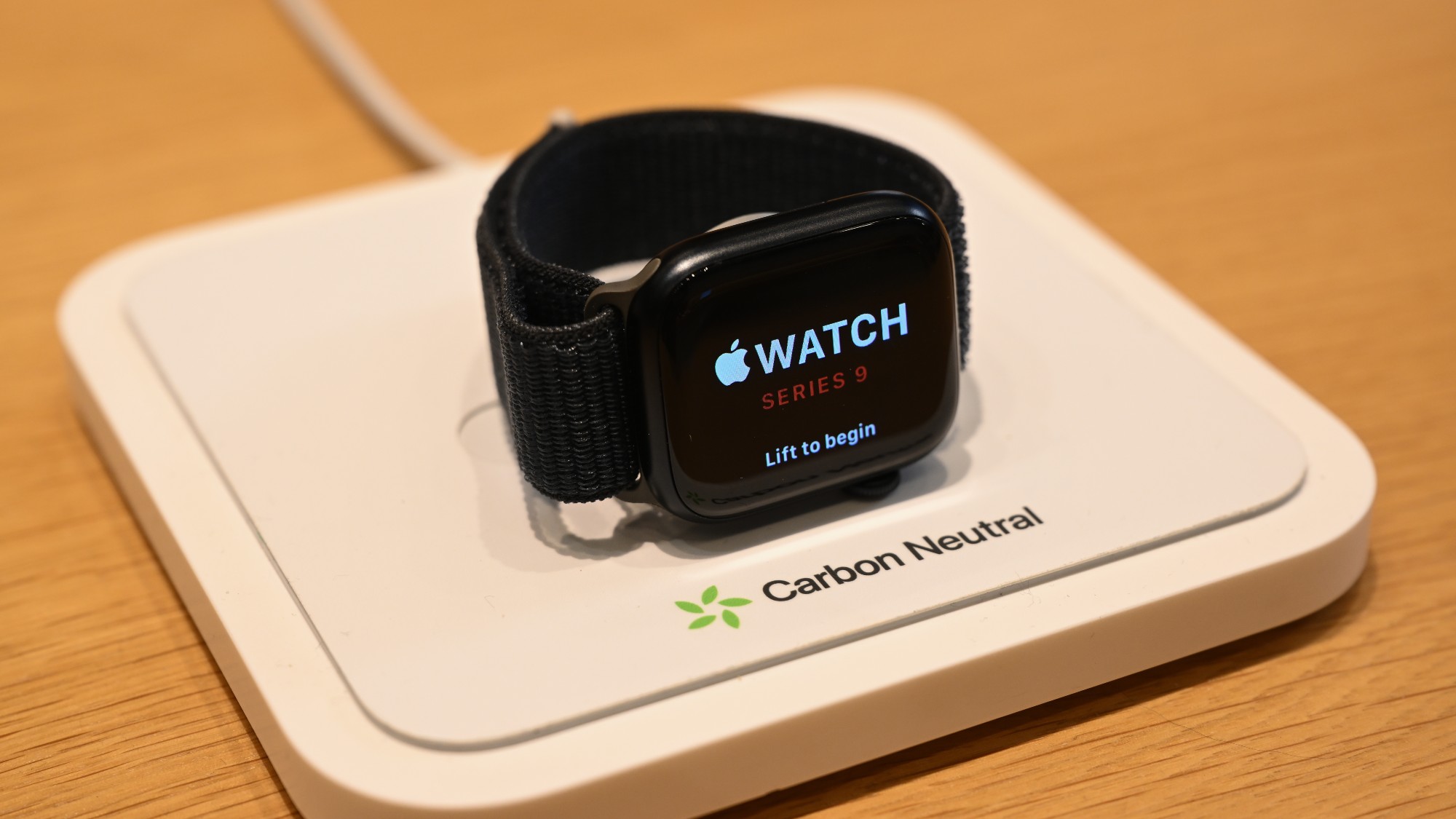 Why Apple's carbon-neutral claims may be misleading
Why Apple's carbon-neutral claims may be misleadingSpeed Read The company isn't disclosing all the information, a new report alleges
-
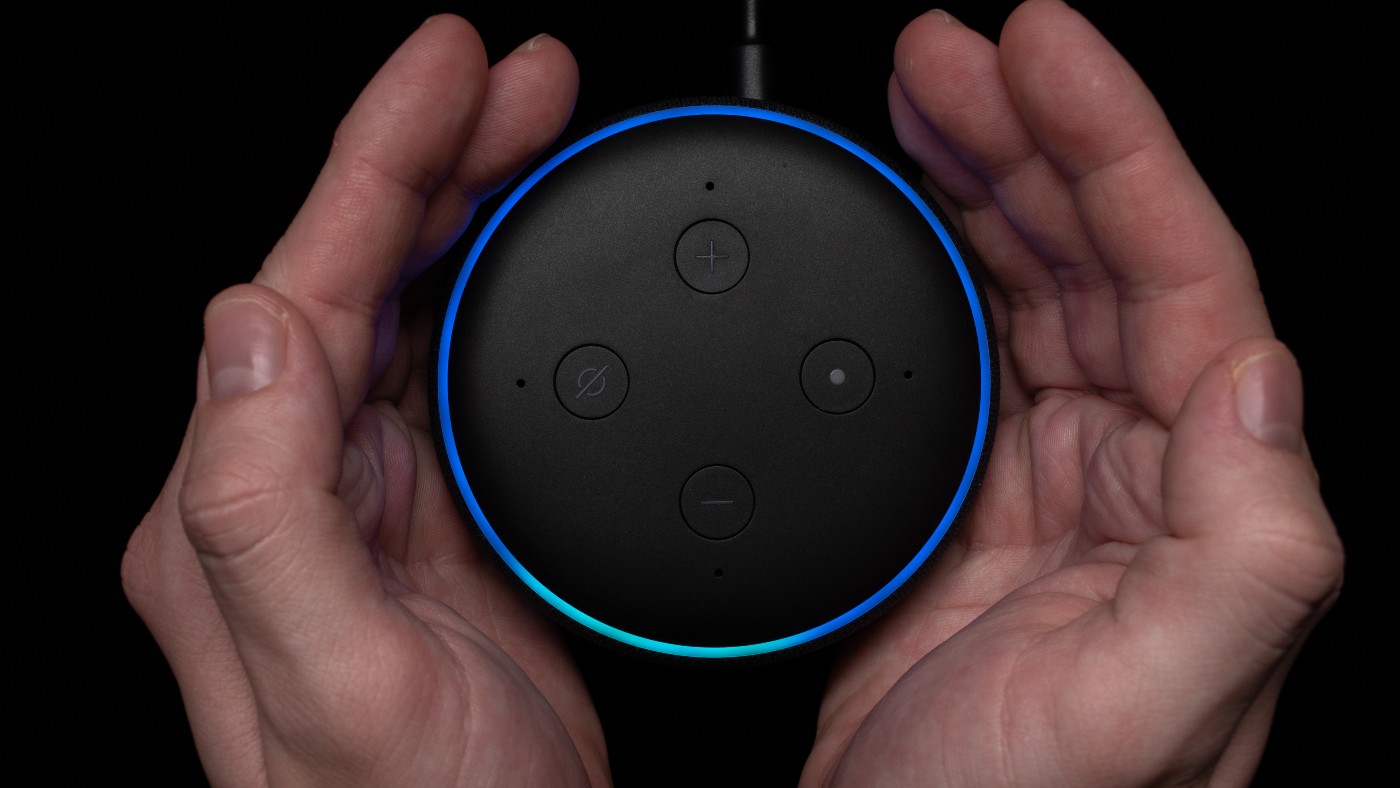 Alexa? How much do you know about me?
Alexa? How much do you know about me?Smart devices are potentially sharing vast amounts of your personal data with social media and marketing companies
-
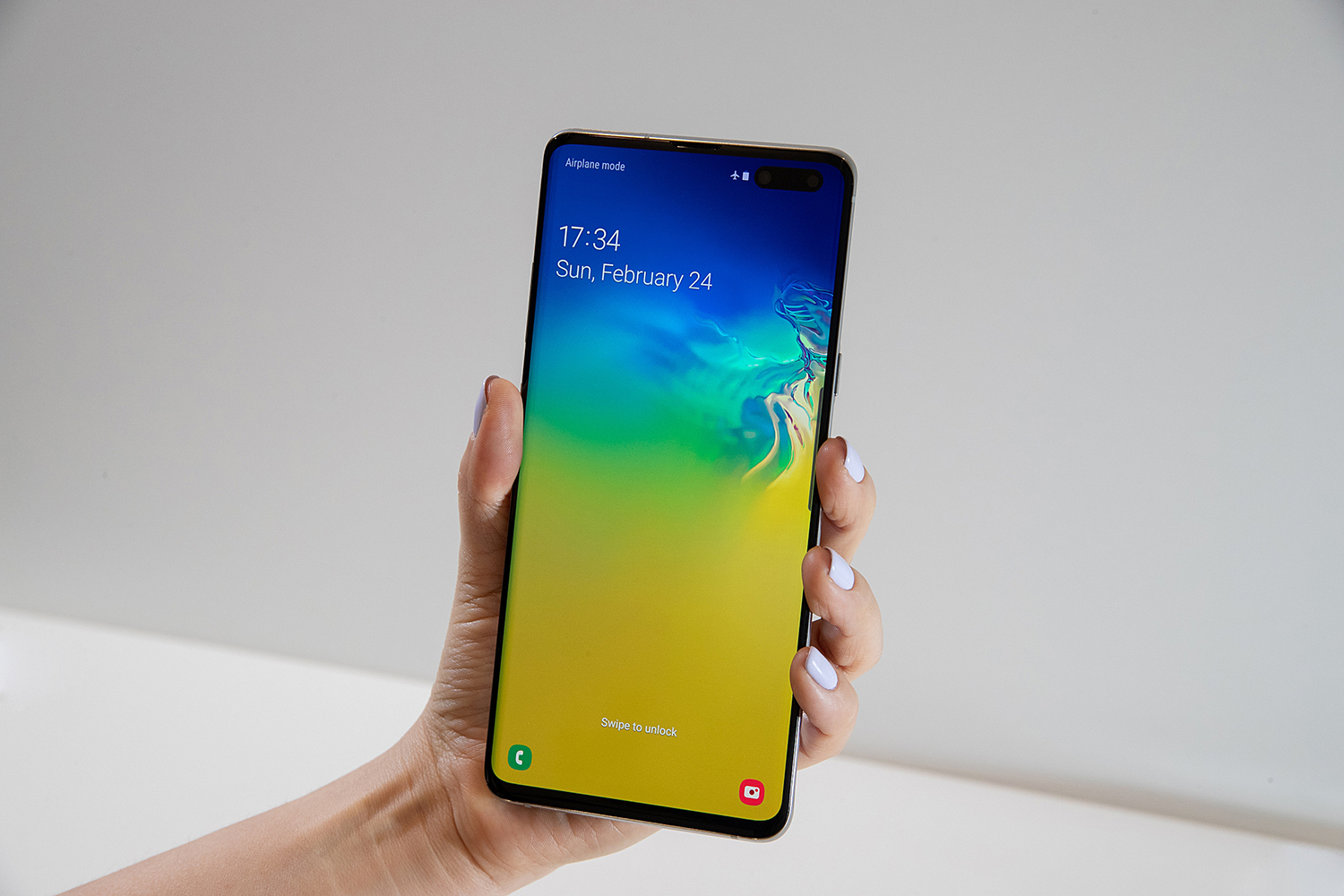 Samsung Galaxy S11 news: design, five-lens camera and more
Samsung Galaxy S11 news: design, five-lens camera and moreIn Depth The iPhone 11 rival is being touted as the Korean firm’s ‘nuclear weapon’ for 2020
-
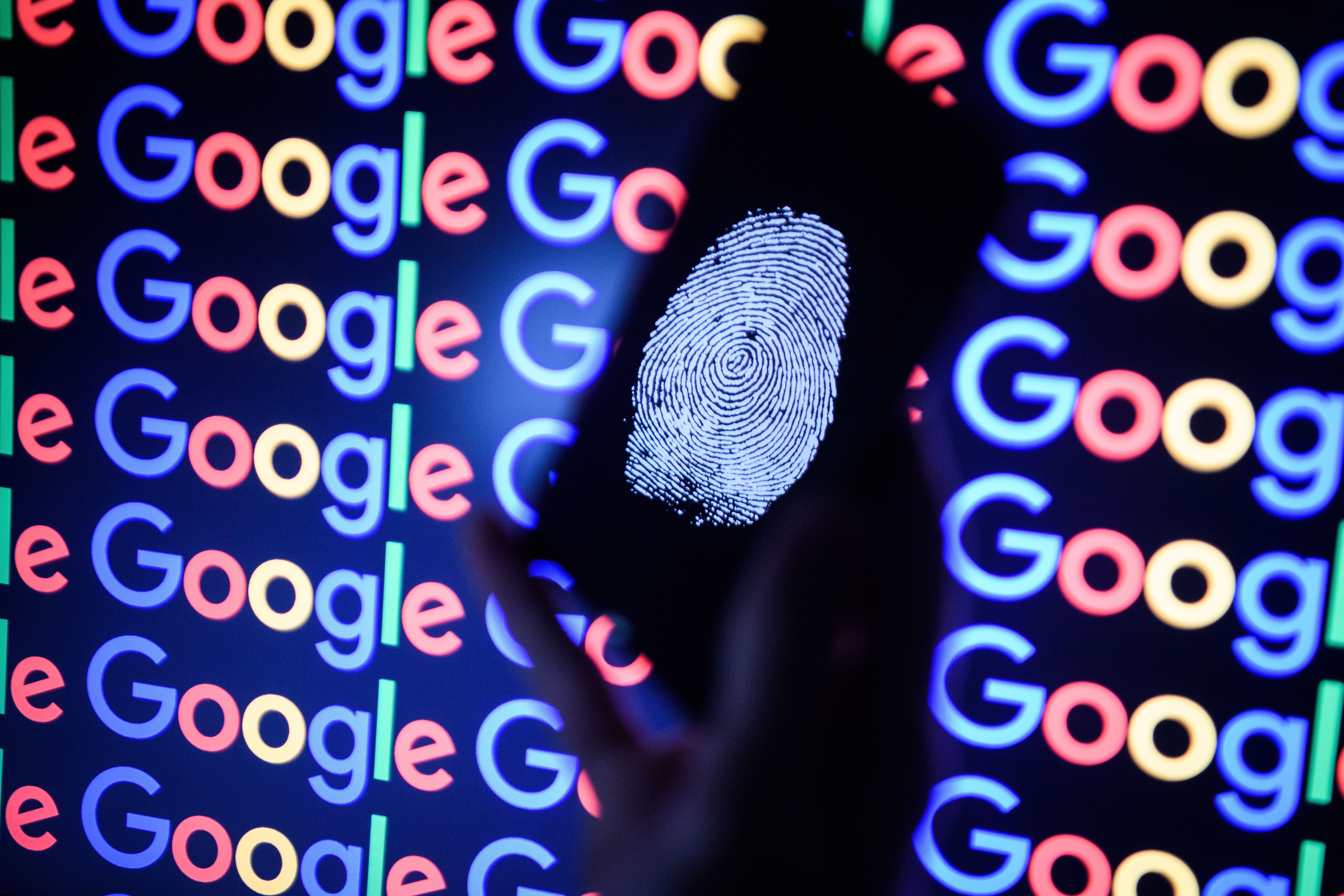 Google Project Nightingale: tens of millions of health records gathered ‘without consent’
Google Project Nightingale: tens of millions of health records gathered ‘without consent’In Depth Search giant’s new deal with health firm could make it a key player in the medical tech race
-
 Tesla Cybertruck 2021: Elon Musk reveals why windows smashed in botched demo
Tesla Cybertruck 2021: Elon Musk reveals why windows smashed in botched demoThe Week Recommends Divisive design hasn’t stopped 200,000 customers pre-ordering the electric pickup
-
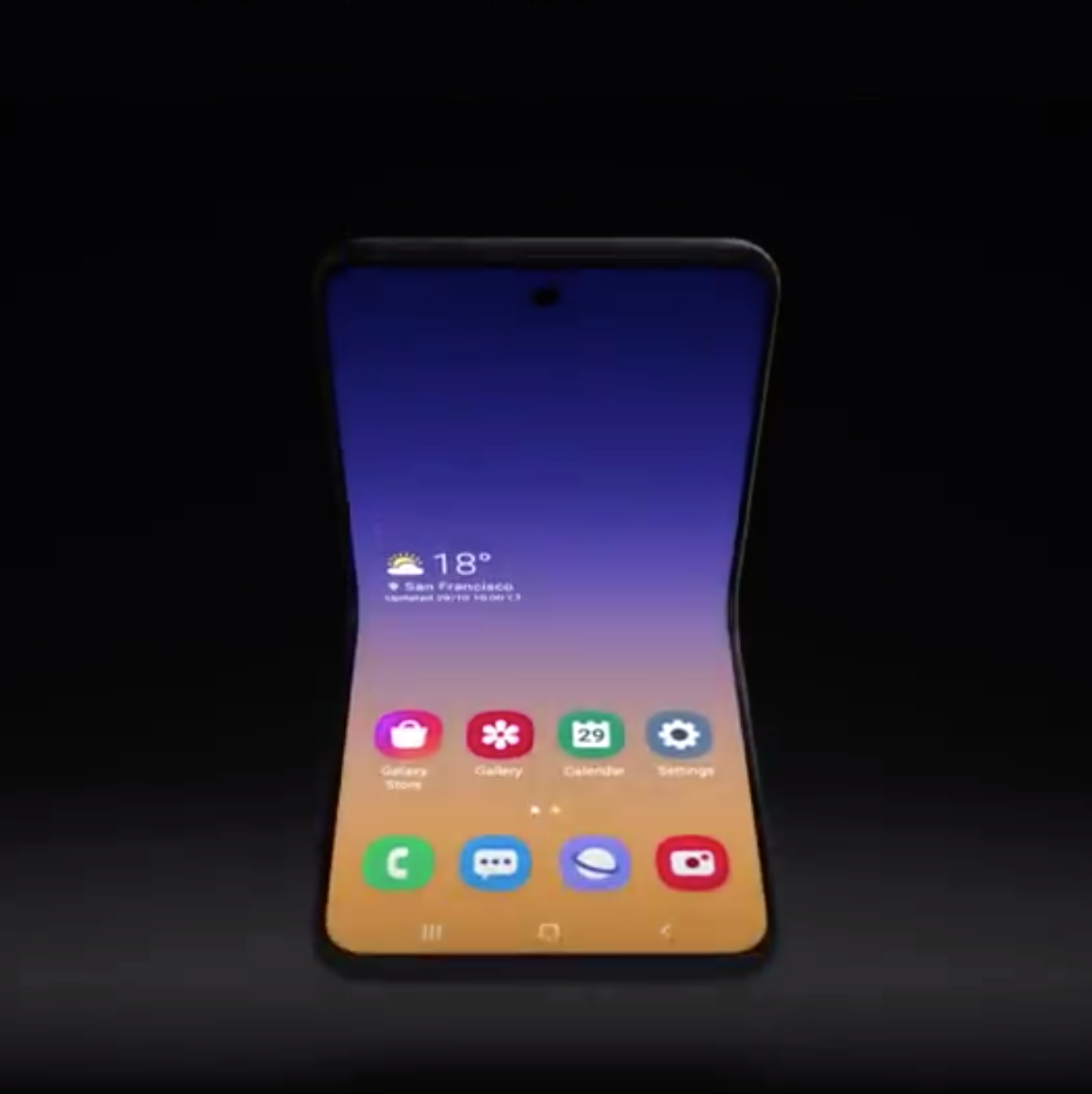 Samsung ‘clamshell’ concept: does it signal the return of the flip phone?
Samsung ‘clamshell’ concept: does it signal the return of the flip phone?In Depth South Korean tech giant still betting on foldable screens despite teething problems
-
 The Last of Us Part II: latest trailer, new features, plot details and release date
The Last of Us Part II: latest trailer, new features, plot details and release dateIn Depth Sequel finally set to arrive after seven-year wait - here are all the details
-
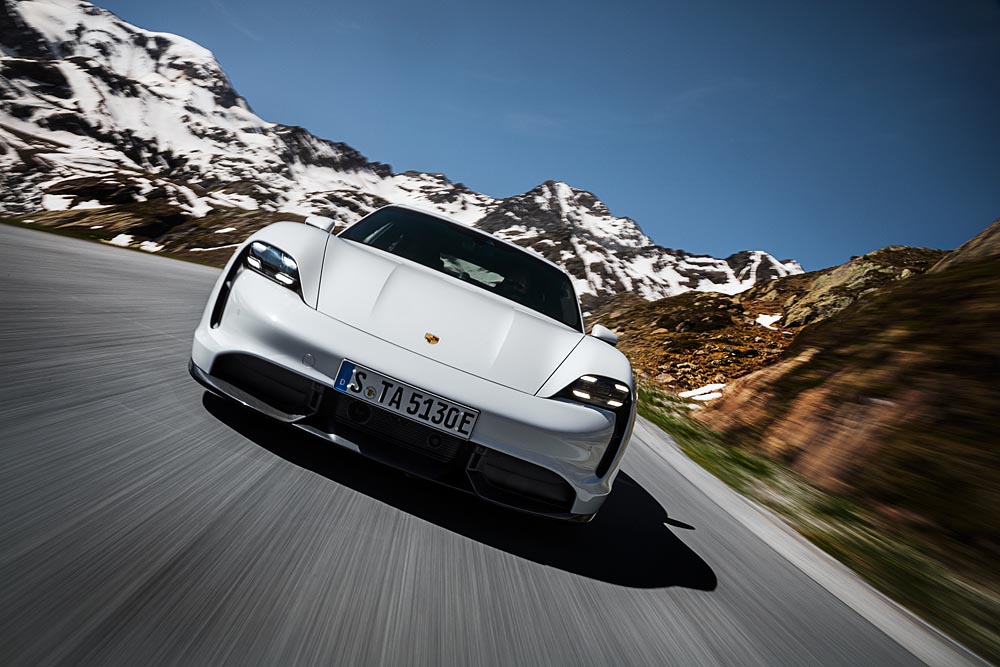 Porsche Taycan vs. Tesla Model S: which is king of the EVs?
Porsche Taycan vs. Tesla Model S: which is king of the EVs?The Week Recommends German firm enters the electric car ring, but it faces stiff competition from US rival